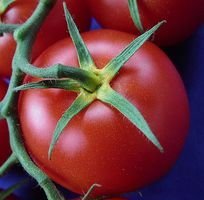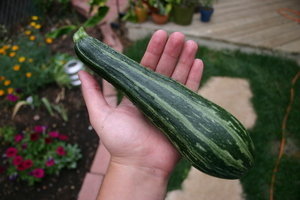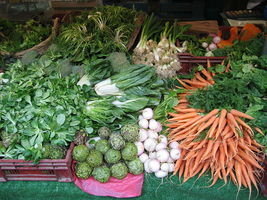





Starting a vegetable garden from seed is a huge undertaking even in warm, hospitable climates. In cooler areas such as Zone 5 and 6 gardens, this can be an even bigger challenge to fight with Mother Nature?s unpredictable last freezes and cool ground temperatures. Use this guide to help you know how to plan and prepare for your veggie starting this year.
The wonderful guide below was given to me during a Saturday morning class called Vegetable Gardening in the Pike's Peak Region at Phelan Gardens, a locally owned nursery here in Colorado Springs. I simply cannot sit on this table; I have to share its helpfulness with the world. The chart is specifically for my region, with its "special" quirks, but I am positive that it could apply to other Zone 5 and 6 gardens throughout the country, if not with a few tweaks.
Mona, the teacher of the class, said the list is compiled with mid-month dates in mind. For example, plant asparagus and broccoli starting in mid April, not the first of April. I find it particularly helpful to have a concrete reference, because without fail I will think it's safe to put corn in the ground in late April. Also having a guide of which vegetables can be replanted for a fall harvest is priceless. I hope you find this table as helpful as I do, because let's face it - who doesn't forget all this information every year?
Vegetable Planting Guide
MarchAprilMayJuneJulyAugustSeptember Asparagus l l Beans l l l Beets l Brocolli l l Short Season Tomatoes Tomatoes present a tangible problem for Rocky Mountain gardeners: our short growing season. Tomatoes don't have enough time in warm soil and air to set roots, bloom and then fruit before the night temperatures drop to damaging levels. Besides using special techniques such as Wall O' Waters, greenhouses, and cold frames, we do have a choice about how to set ourselves up for success. Choosing fruit to grow that needs a shorter than average growing season will help better our odds with our beloved 'maters. Cool season gardeners really have no choice when it comes to picking tomato varieties; okay that's a little incendiary, but the fact of the matter is that we have to grow early- to mid-season varieties in order to have a worthwhile harvest from healthy plants. Some shorter season tomatoes leave something to be desired in taste, disease, or chill resistance. However, you can balance the three of these factors when choosing a short season tomato. Some short season tomatoes to try: While tomatoes are arguably the most arguable of the home vegetable gardener's harvest, it is wise to select other shorter season vegetables to ensure a productive harvest and a busy preserving season. Long season veggies that can work for short seasons: Vegetables such as kohlrabi, leafy greens, radish, broccoli, green beans, peas, and carrots usually produce in a short time and can withstand cooler temperatures, which makes them resistant to the negative effects of our short growing season. It is advisable to stagger plant these crops to guarantee a summer's worth of production. For more tips on how to prolong your growing season and get the most out of your cool weather garden, please take a look at this article from the Pacific Northwest Extension Service. Another excellent reference is this guide to planting a successful vegetable garden. I hope the resources in this article will be of help to you as you plan your strongest, most productive vegetable garden this year. Just because we have bearable summers and "cool" winters doesn't mean we can't grow a mean veggie garden! ****** We are definitely each other's best resource...please share your favorite early harvest vegetable below! Sources: http://www.phelangardens.com/ http://www.tomatogrowers.com/early2.htm Special thanks goes to my mom (bookworm28) who knows an awful lot about early season tomato varieties for a very different reason...she lives in hot, humid Houston! (Editor's Note: This article was originaly published on May 4, 2009. Your comments are welcome, but please be aware that authors of previously published articles may not be able to respond to your questions.) 


Copyright © www.100flowers.win Botanic Garden All Rights Reserved